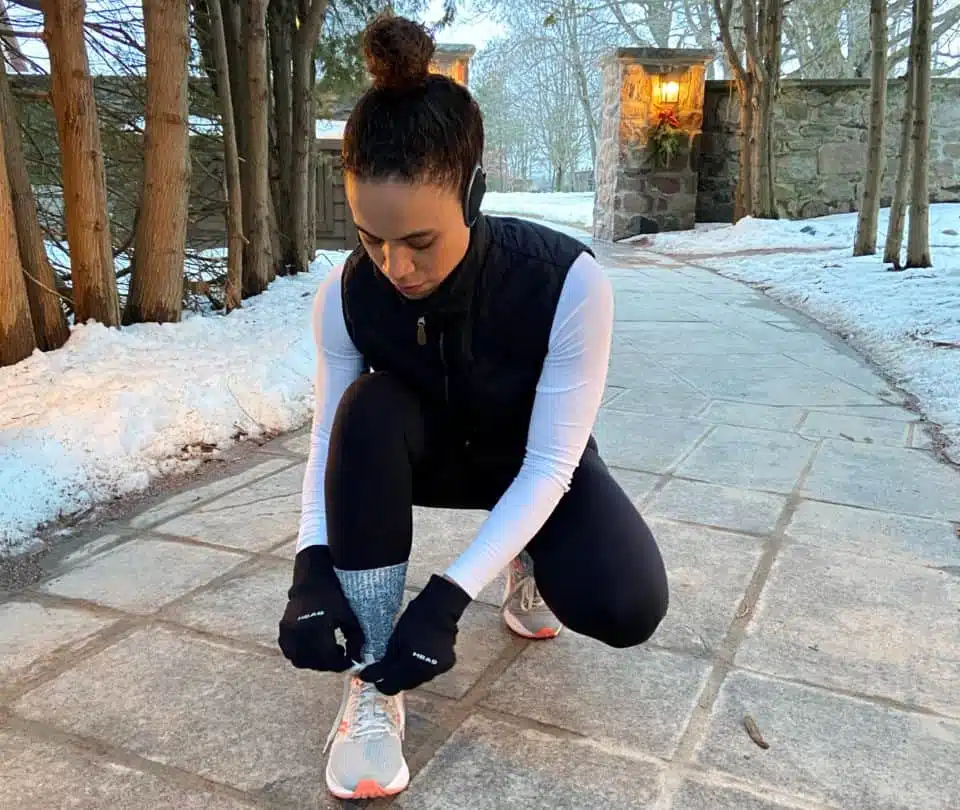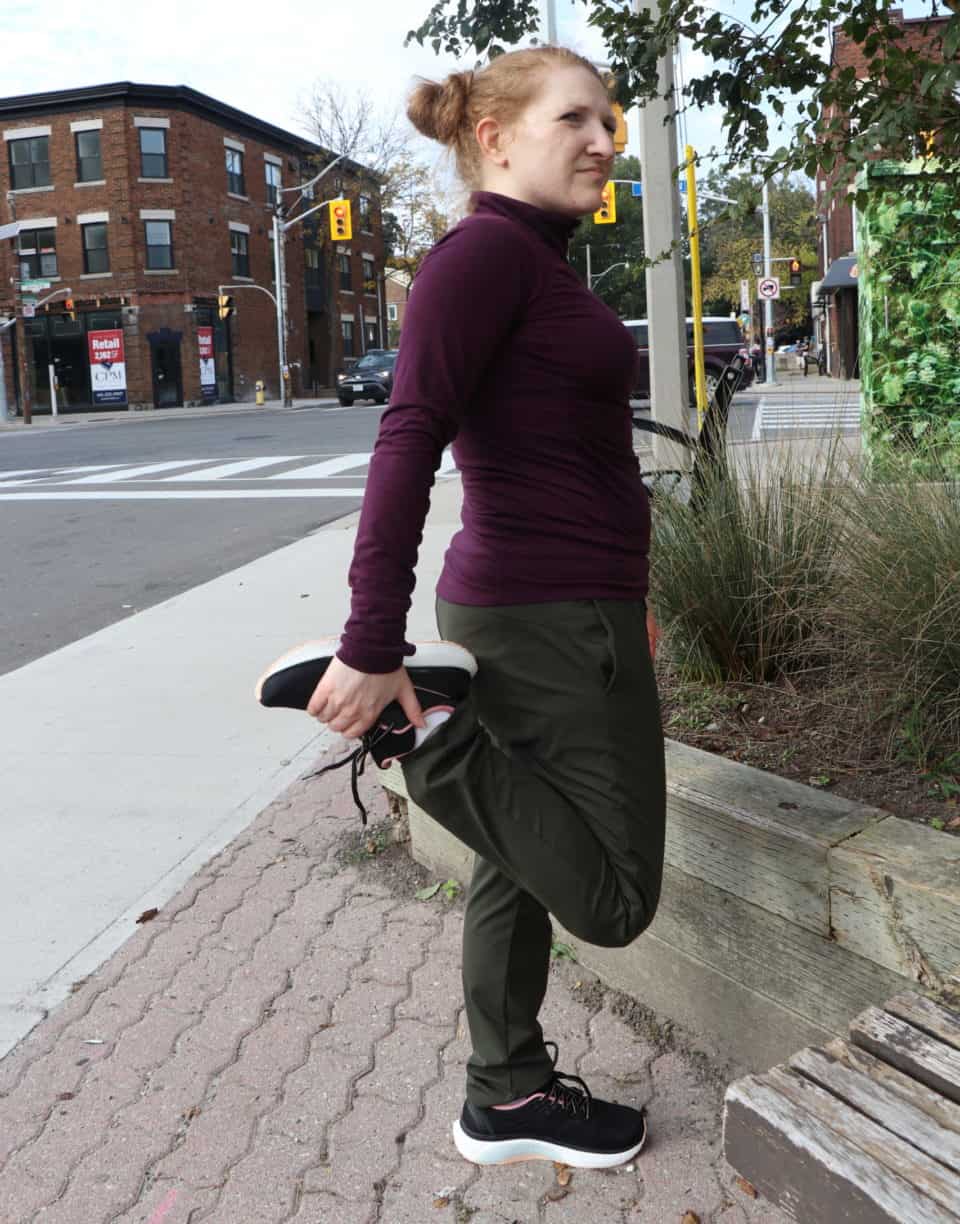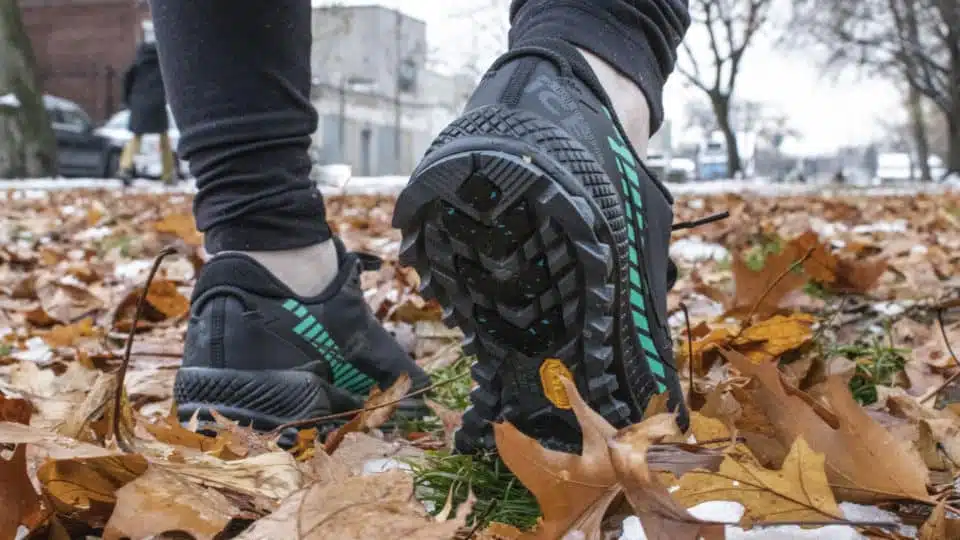Running is one of the most beneficial and rewarding forms of exercise. Although there is a risk of injury, the benefits largely outweigh the risks. Through running, you can build cardiovascular strength and respiratory health, strengthen the immune system, reduce the risk of certain diseases, lessen stress, anxiety, and depression, among other benefits.
Outdoor running is also a year-round activity, although running in winter presents unique challenges. Footing, temperature, wind, and daylight all play a role in running’s accessibility, and importantly, its enjoyability. Running in winter comes with a certain level of discomfort (especially if you dislike the cold), and requires proper planning and taking the right precautions.
We’re here to help you prepare, and make the most of winter running. In this article, you’ll learn about 10 different ways to make winter running more enjoyable.
1. Be visible
Winter is the darkest time of year, regardless of how you interpret it. There is simply less daylight to run. With longer nights and shorter days, runs in the dark are inevitable. Your best protection against darkness is to wear bright clothing (avoid dark, neutral colours), and invest in either a headlamp, a running-specific light, or a lighted reflective safety vest. Not only will you yourself be able to see better, others on the road will be able to see you better too.
A good rule of thumb to keep in mind is: just because you see them, doesn’t mean they see you. While brighter apparel and lights help, being cautious of cars and cyclists (if they’re out) will make running in winter safer.
2. Plan your warm-up and cool down
A great way to get injured is to start running without any warmup at all. Your warmup could be as simple as some light stretching or even walking for 5 minutes outside before running. If you’re unable to do a warmup, start off slowly, allow your body time to adjust to the physical activity, then resume your normal pace.
Picture this: you sit at home or at work for 8-10 hours a day. Your muscles are likely tight, and your body has been sedentary so you aren’t exercise-ready. Taking the 5-10 minutes of light exercises (it could be calf raises, or jogging on the spot, or some of these dynamic stretches for runners) will improve your time running and will make it more enjoyable since you’ll be ready.
It’s even more important to stretch after exercise: After physical activity, lactic acid builds up around your muscles, which makes them stiff, sore and tired. The muscles then tighten, which over time will cause significant injury. Stretching after physical activity counteracts this: it promotes circulation, breaks up the lactic acid, and loosens and restores your muscles to their optimal form.
3. Know your route
Plan your route ahead of time. Or, run a route you know.
Planning a new route keeps your routine fresh, and allows you to explore a trail or a neighbourhood you’ve never seen. Breaking up the repetition of the same route over and over can also freshen up the experience. But it also requires the necessary planning to make sure you don’t get lost.
The advantage of running a route you’re used to is it reduces the risk of getting lost and allows you to adequately time your run within your limits.
Regardless of where you run, bring your phone, a credit card, and a mask in case you need to find a way home, or in case of emergency. Tell people where you’re running. And, if necessary, use a GPS watch to track your run, and map out a return route if needed.
4. The treadmill and elliptical are your friends
It’s OK to say “no” to running outside. Sometimes, it can be more enjoyable to turn on your favourite show, stay indoors, and run or walk on your treadmill or elliptical. This way, you avoid winter conditions, and you can easily control your pace. These machines can be adjusted for the pace (speed), and elevation (steepness), without the thought of slipping on ice. If you’re a beginner runner or have back and joint issues, an elliptical can be a great running companion; they give you all of the benefits of running without the heavy impact on your feet and joints.
5. Set a goal

- Run 3 times a week for a month
- Work your way up to a 20 minute run with no walking (you can do more or less depending on your fitness level)
- Run 20km this winter
It should also go without saying that this can also tie into a New Year’s resolution. Start small, be consistent, and progress bit by bit towards your goal. This can shift your mindset to focusing on the day or the week, instead of dreading the fact that there are still 2-3 months left of winter. Best of all, because winter running takes more strength, when the weather warms up running will be a breeze and you’ll be ready to set your goals higher.
6. Wear winter-proof running shoes
Shoes are a runner’s best friend. Running shoes are specifically made for this activity, and many brands offer specific winter-proof versions of their most common models. These winter features might include better traction, Gore-Tex, or warmth. Check out our post on the best winter running shoes to find out more on how to winterproof your running.
Wearing supportive and running-specific footwear can help fend off common injuries and foot conditions. These include plantar fasciitis, blisters, Achilles tendonitis, and metatarsalgia.
7. Stay hydrated
Although it may not feel as though we sweat as much in the winter, it’s still critical to stay hydrated. You should hydrate both before, and after your run. Dehydration is harder to spot as you may expect it less in the cold (you may not even recognize the fact that you’re losing water due to the cold or layers of apparel).
8. Know when it’s too cold
Recognize when it’s too cold to run outside. If it hurts to breathe, then it’s likely that you’re best to stay indoors and find an alternative means of physical activity (i.e.: yoga, treadmill/elliptical running, spinning, resistance exercises). Taking the proper precaution(s) can help prevent temperature-related injury, and knowing the conditions can also help you prepare for the footing outside (i.e.: ice, snow, slush, etc.).
9. Layer up and dress for the weather
Once you start running, you’ll heat up to compensate – unless it’s cold and windy. In that case, layer appropriately, so you can add or remove layers depending on the changing conditions. Importantly, you’ll want to keep your extremities warm since they’re most at risk of frostbite or frostnip. Wear warm socks, use gloves, and wear a hand band or toque to cover your ears. Toes, ears, nose, cheeks, and fingers are most at-risk of developing frostbite.
The best way to layer up is with technical fabrics. These are thin layers of apparel that wick moisture away from your body. Layering also means you have greater control over your body temperature since you’ll be able to add or shed multiple layers accordingly.
While it’s important to make sure you’re dressed warm enough, don’t dress too warm. Dressing too warm can cause excessive sweating. Sweating is our body’s natural way to cool itself down, which can be dangerous when you’re already out in the cold. Not only will this make your run extremely unpleasant, it can also injury, frost-bite or even hypothermia.
10. Run together (or with your dog!)
Running is better together. Make your exercise social by pairing up with a running buddy (if safe to do so). Doing this will help keep you accountable for your goals, and help motivate you.
Additionally, you can socialize your exercise by posting your progress publicly through Strava, Garmin Connect, Runkeeper, or any of the other handful of free or paid running apps available.
Social running can also include your non-human friends. Running with your pet is a great way to give both you and your furry companion some much needed exercise.















